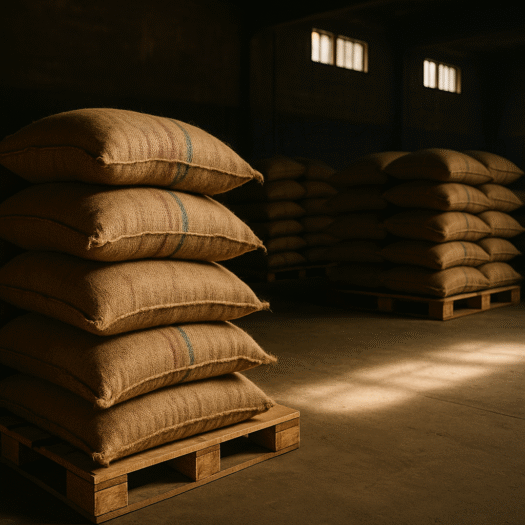Qahwa World – Qahwa World
Coffee prices rose on Wednesday as shrinking ICE inventories and ongoing trade tensions between the United States and Brazil brought renewed momentum to the global coffee market.
December Arabica coffee (KCZ25) closed up +2.80 (+0.72%), while January Robusta coffee (RMF26) finished +145 (+3.25%) higher.
ICE-monitored Arabica inventories fell to a 1.5-year low of 446,475 bags, while Robusta stocks dropped to a 3.25-month low of 6,111 lots. This sharp decline follows the 50% tariffs imposed by the United States on imports of Brazilian coffee, prompting many American buyers to cancel new contracts. Brazil typically supplies about one-third of the U.S. unroasted coffee, tightening domestic supply.
Earlier this week, forecasts of rain in Brazil temporarily pressured prices. Meteorological agency Somar Meteorologia reported that Minas Gerais—the country’s largest Arabica-producing state—received only 0.3 mm of rainfall in the week ending October 24, or just 1% of the historical average. While upcoming rainfall could ease dry conditions, concerns remain about the impact on the critical flowering period for the 2026/27 crop.
Speculation is also mounting that the United States may lift tariffs on Brazilian coffee. Brazilian President Luiz Inácio Lula da Silva said he had a “surprisingly good” meeting with U.S. President Donald Trump on the sidelines of the ASEAN Summit in Malaysia, adding that a “definitive solution” on trade could be reached within days.
Last week, Arabica coffee prices hit an 8.5-month high amid fears that prolonged drought in Brazil’s growing regions could threaten the 2026/27 harvest. According to Bloomberg’s Brazil Weather Analysis, Minas Gerais has received only 70% of its average monthly rainfall over the past month.
Prices also gained support after the U.S. National Oceanic and Atmospheric Administration (NOAA) raised the probability of a La Niña weather pattern to 71% between October and December, a development that could intensify dry conditions across Brazil and further impact production.
Meanwhile, Robusta coffee faced pressure from an increase in Vietnamese supply. Vietnam’s National Statistics Office reported that coffee exports rose 10.9% year-on-year between January and September 2025 to 1.23 million metric tons. The Vietnam Coffee and Cocoa Association (Vicofa) forecasts that 2025/26 coffee production could rise 10% if weather conditions remain favorable, reaching 1.76 MMT (29.4 million bags) — a four-year high.
At the global level, the International Coffee Organization (ICO) reported that world coffee exports for the current marketing year (October–August) increased 0.2% year-on-year to 127.92 million bags, indicating adequate global supply.
In Brazil, crop forecasting agency Conab revised its 2025 Arabica coffee crop estimate down by 4.9% to 35.2 million bags, while lowering its total coffee production estimate by 0.9% to 55.2 million bags.
According to the U.S. Department of Agriculture’s Foreign Agriculture Service (FAS), global coffee production for 2025/26 is projected to increase 2.5% year-on-year to a record 178.68 million bags, with Arabica output expected to decline 1.7% to 97.02 million bags and Robusta production to rise 7.9% to 81.66 million bags. Brazil’s output is projected to increase 0.5% to 65 million bags, while Vietnam’s could grow 6.9% to 31 million bags.
Global ending stocks are forecast to rise 4.9% to 22.82 million bags, compared with 21.75 million bags in 2024/25.
The post Falling Inventories and Trade Tensions Revive Momentum in Coffee Prices appeared first on Qahwa World.




